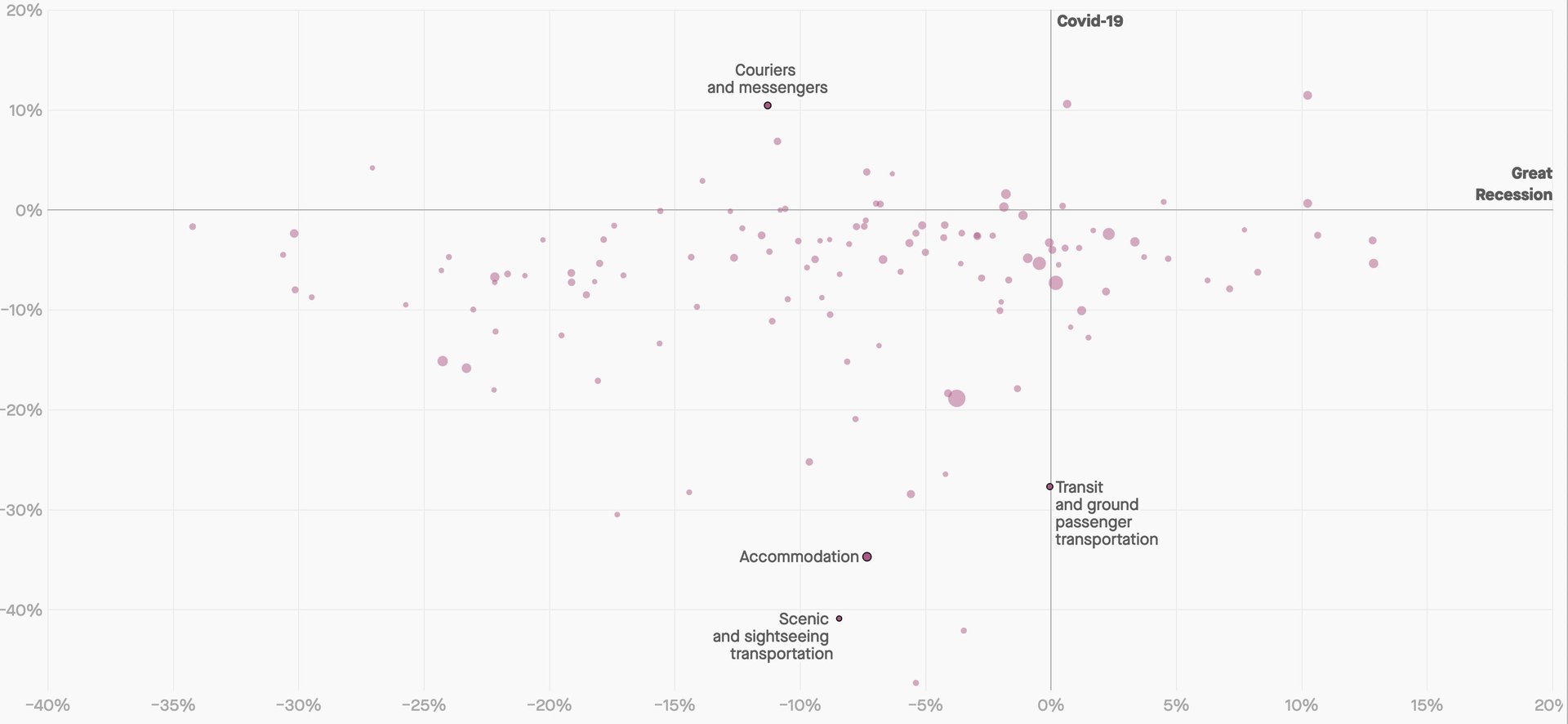Data show these US industries have the most recession proof jobs
The US has faced two major economic calamities this century, the Great Recession and Covid-19. In both cases, huge numbers of people lost their jobs. During the Great Recession the number of employed Americans fell by 9 million and almost 11 million fewer people had jobs in September 2020 than in February.


The US has faced two major economic calamities this century, the Great Recession and Covid-19. In both cases, huge numbers of people lost their jobs. During the Great Recession the number of employed Americans fell by 9 million and almost 11 million fewer people had jobs in September 2020 than in February.
But jobs in all industries were not hit equally hard. In fact, there were a few industries where jobs actually expanded during both recessions, according to Quartz’s analysis of data from the US Bureau of Labor Statistics (BLS).
Industries that gained jobs in the last two recessions
Two of these recession-proof industries are:
- General merchandise stores: Big box stores like Walmart and Target thrive in hard times as people look for discounts rather than quality.
- “Scientific Development and Research”: Scientific research jobs are resilient to recessions because colleges and universities, which typically don’t lose funding in recessions, are major employers. Also the jobs are usually part of long-term projects.
In contrast, travel-industry jobs were hit incredibly hard in both recessions, as businesses cut costs, consumers cut back on luxuries, and people stayed home.
Federal government workers did well during both recessions. The federal government’s workforce expanded by about 10% in both recessions, though most of those gains during Covid-19 were a result of temporary hiring for the decennial US Census. Excluding that hiring, the number of federal government jobs remained about the same.
(To learn more about specific industries, click on a link at this BLS website.)
The highest and lowest wages for recession-proof jobs
Some recession-resilient industries don’t pay well. Others do:
- Food and beverage stores: Jobs at grocery and liquor stores are stable in recessions, but the average wage in the industry is $16 an hour. The average private-sector worker makes $28.50 an hour.
- Physicians offices are both recession-proof and offer good wages. Doctors and nurses may have grueling jobs, but at least they are stable and lucrative. The average worker makes over $40 an hour. (Wage statistics are only available for about 80% of industries.)